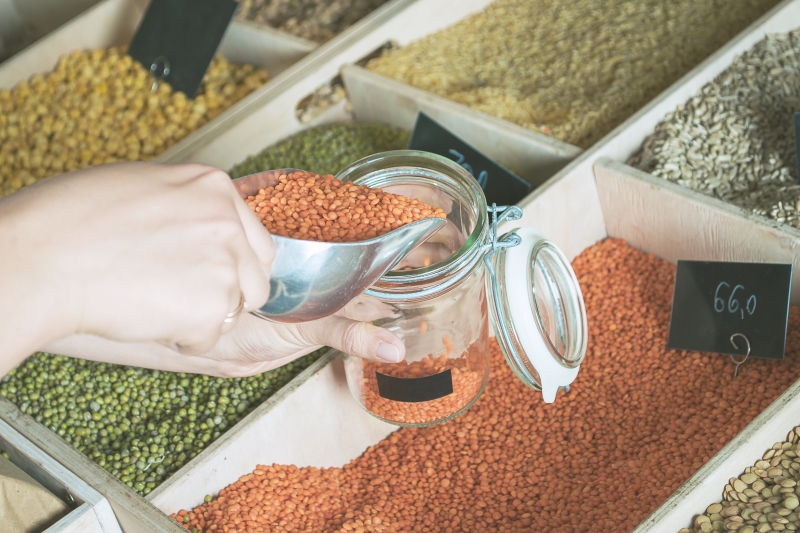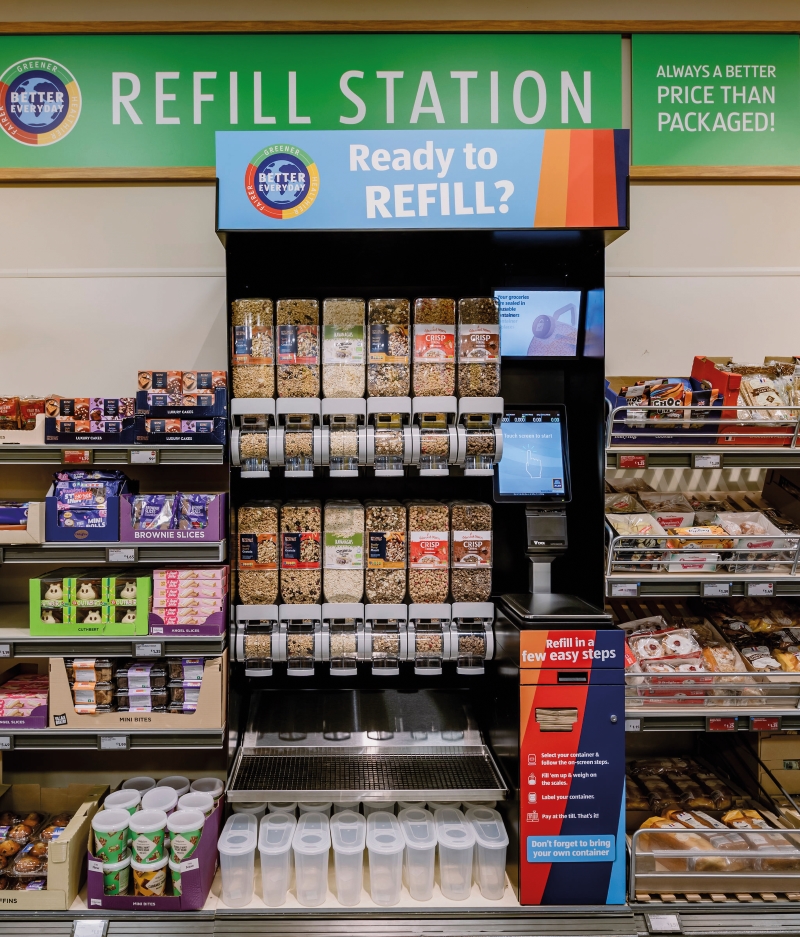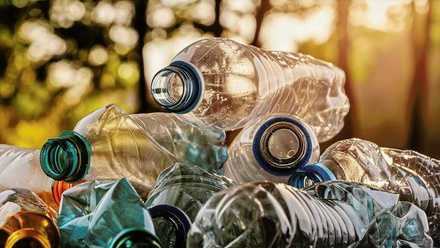Food for thought - refillable packaging
Unpacking the growing appetite for refillable, reusable and returnable packaging.

Packaging innovation is key to encourage a shift in purchasing behaviour from ‘single-use’ to ‘reuse’ in UK supermarkets, according to a report released by campaign group City to Sea and supply chain specialists Reposit. The report, Ready to prefill? Market innovation to unlock growth in the market, explores current consumer perceptions, barriers and motivations relating to prefilled packaging that can then be returned for refilling, and was part-funded by UK Research and Innovation’s Smart Sustainable Plastic Packaging initiative.
It shares insights from behaviour-change consultants and some of the biggest retail and grocery brands in the UK, together with findings from a nationally representative consumer research project. The report reveals the importance of right place and right price. It finds:
- Consumer demand is high – 69% of respondents indicate they are likely or very likely to try products in returnable packaging if they are available where they shop, but lack of availability is preventing trials.
- Prefilled returnable packaging presents a significant opportunity for brands – over half of respondents (53%) said they were more likely to buy from a brand that offered products in prefilled returnable packaging, rising to 84% among those that had previously bought products in returnable packaging.
- Consumers are unwilling to compromise on price – six in 10 of the consumers note that value for money was the most important criteria influencing their product choice. Nearly half of the respondents are, however, prepared to pay a deposit for a product that they buy in returnable packaging.
Changing behaviours?
Catherine Conway, Director of GoUnpackaged – one of the founders of the UK’s Refill Coalition – says, 'Consumers are changing their mindset and their behaviour because they want a solution to what they perceive to be a bad thing, which is single-use plastic waste. I don’t think we are at the stage yet where we can claim that mainstream consumers are walking into a retailer and saying where is the refill section? But they are very much saying to the retailers, why arenʼt you doing something about single-use plastic packaging?'
Added to the fact that early-adopters among consumers are 100% invested in the concept of refill and go to zero-waste shops and markets, 'theyʼre already kind of converted', she says.
Some of those zero-waste shops were spearheaded by firm Refill Revolution. Founder Beth Lambert started the company while on maternity leave with her second child after finding it difficult to incorporate sustainable shopping into a busy family life. She says, 'I think for the past…five or six years there has been a huge wave of awareness around reducing plastic waste and refill shops. And we saw a significant number of ration refill shops opening and being really successful and thriving.'
Though she notes that COVID-19 and lockdown shifted priorities and budgets, putting independent refill shops under significant pressure, and so refill has come to be seen as a luxury lifestyle choice.
'The evidence would suggest, given how many shops are closing, that while awareness is there…itʼs not necessarily meeting the needs of the consumer at the minute…We make very little money, we are competing with prices in supermarkets.'
Jane Martin, Head of Development at City to Sea, says, 'One of the things weʼve learned from talking to our colleagues at the bigger brands is that actually the refill and reuse opportunity gives a whole new space to build brand equity with a large swathe of consumers who were already looking to shop more sustainably.
'So I think one of our messages would be, donʼt just try and copy what youʼve done in single-use. Take that brand and develop it to hit that large number of consumers who are looking to shop more sustainably and looking for sustainable brands because itʼs not just about packaging, is it?
'But certainly, packaging is definitely one of the places where people are first starting to kind of wrestle with some of these challenges themselves.'
Sarah Greenwood FIMMM, a packaging technology expert from the University of Sheffield, UK, with over 20 years of industry experience, says, 'All the feedback…is that people will engage with reuse…if itʼs available.
'For the last two-and-a-half years weʼve been running a reusable container scheme in our cafés at the University of Sheffield. The uptake [initially] was disappointingly low.' They had first introduced reusable bowls, but then turned to reusable cups. 'Without hardly any advertising at all, the cups soon overtook the bowls…I was surprised, our psychologists werenʼt, because they were saying ‘well actually people are already used to bringing their own cup’.' They then introduced a charge for cups. She says, 'The really interesting thing is that when it settled down, people got used to using the scheme.'
Mike Swain FIMMM, Venture Manager at Pilot Lite, with over 20 years in the packaging industry, says, 'To put it bluntly…consumers want products that are convenient – you canʼt get away from that. But when they say they want refill, they donʼt really understand what refill is. Thereʼs been so much noise about refill that people are getting confused.' He says we need a simple story of what refill is and how it works.
The Refill Coalition has developed an animation video that accompanies their new initiative. Conway adds, 'And then you layer on top of that, the potential for these products to be 5% cheaper. And thatʼs where you suddenly start to see a change.'
Did you know?
38% of shoppers would be interested in refill pouches for beauty-related products.Source: UK Sustainability in Beauty and Personal Care Market Report 2022, Mintel
Scaling up
If the appetite is there, how do we get there on a larger scale? Swain reflects that, up until now, packaging had to be designed to deliver products just in time, whereas in a future refill model, packaging needs to work over several lifecycles.
He says, 'Innovation has a huge role to play, because innovation, depending on your perspective, is not necessarily inventing something new all the time. Innovation is often taking something that has been used and being able to use it better, more effectively, for a job that it was either designed to do, or for something we can do as a consequence of its design. This is about taking those elements that we know work and working better.'
Martin adds, 'I think one of the words we use so much is collaboration, and a move towards particularly supply chain collaboration.' She says this is important to scale up pilot trials, as often they do not expand because they are not to scale. 'You havenʼt got the supply chain around that pilot to make it work.'
She continues, 'One of the blockers for lots of big organisations to transfer across to reusable packaging is that if they buy a load of packaging, and they suddenly get all of that carbon on their books, and that completely blows out the water all of their sustainability targets for that year.' So, she sees the need for supply chain innovation, collaboration and a consistent voice and experience for the consumer as being key to real progress.
In this context, Martin says, innovation 'echoes back 50 to 60 years before we entered the single-use frenzy in the first place'. She adds, 'If you are returning your packaging, you are starting to create a kind of virtuous circle of loyalty and being able to then reward people for that sustainable behaviour.'
There are such innovative brands entering the market, she notes. 'I really do think that industry is turning towards refill and reuse, and the people that innovate and jump now will catch a wave of grateful consumers and hopefully market share.'
High-end mentality
Swain also sees a difference between high-end brands and everyday products from a refill perspective. Taking a glass bottle and reusing it is an everyday thing. 'It definitely falls into this idea of convenience and product delivery…it doesnʼt matter what the delivery mechanism is…it just needs to be as ubiquitous and as simple and as convenient as it possibly can.
'On the other side of things, [is] where you are not just necessarily selling a product, you are selling an entry into a brand and a whole world of things that you want to be associated with. What that does is, it allows you to make more connection with certain groups of people. 'It also means that they are prepared to inconvenience themselves to keep that ethos going, which is a very interesting dynamic.'
Taking stock
Overall, Swain believes the current linear system is relatively easy to transform into a reusable system. In an ideal world, he would like to see products and services being delivered to people’s doors and then similarly returned. He envisions a reusable box system where every time a delivery comes back, the box is returned with potentially other returnable packaging.
Conway is likewise positive. She says, 'We [now] have a viable, functioning solution. It’s working (see box-out opposite on trials at retailer Aldi). Obviously, that’s the in-store part of it, and [an upcoming trial by online retailer] Ocado will be the online part of it, which is a direct-to-consumer model. That is yet to be launched and trialled and tested, but all of the indications are that it will work in the same way that the Aldi solution is working.
'It’s just it took time to do R&D when you are creating a solution from scratch. So, we have overcome all of those issues and design prototyping.' She identifies the key challenge of balancing priorities across the supply chain. Now she thinks it is more a question of adoption.
She continues, 'In terms of The Refill Coalition’s projects, best-case scenario is further take-up from UK retailers and take-up from European and global retailers and brands. In terms of GoUnpackaged, our position…is we should be looking for an ambitious rate of reuse across all key categories.'
City to Sea also has bold ambitions. Martin says, 'Our vision is that 30% of packaging will be reusable by 2030. And that's an ask we are making of government.
'And part of our rationale around that is also around tipping points. So, when you get the market moving to around 25 or 30%, you start to get that sense of an overarching movement, where everybody realises this is the way it’s going.
'Of course, our vision is for as much packaging as possible that can be recycled to be recycled. And we think Extended Producer Responsibility is a great step towards supporting the public sector to be able to handle all of the epic amounts of packaging that comes from the market.'
Lambert, on the other hand, is looking for support in her role in the movement. 'We could do with a tonne of support to make our systems more effective and efficient.'
She says, in an ideal world, the bigger organisations would take the independent refill stores under their wing. 'This isn't about competition. We can’t compete with rock-bottom prices in Aldi…We don’t look at things in that way. We are trying to deliver real community and sustainable value…I don’t know if those things can ever work together.'
Swain feels we have reached the level at which all the 'low hanging fruit' has been picked and now we need to work at picking the 'much better' but much harder-to-reach fruit for the next step in the refill journey. He concludes, 'Reusability is a brilliant idea', but it is going to require some work.
Refill roll-out

Retailer Aldi has rolled out a trial of a new refi ll system at its store in Solihull, UK, following three years of development with The Refill Coalition. Th is is being followed by an online trial with retailer Ocado.
Th e live trials are supported by Innovate UK’s Smart Sustainable Plastic Packaging Fund as part of Th e Refi ll Coalition.
Partners of the Coalition comprise Aldi, GoUnpackaged, Ocado, Chep (a pallet provider) and Innovate UK. Jointly, they are working on an open-source industry standard, which they believe is the fastest way to scale refill and reduce single-use
plastic packaging waste.
The Solihull model is billed to be the first, fully scalable, refill system that:
- Removes single-use packaging from retailers – both primary and secondary
- Reinvents the supply chain – removing single-use packaging from the moment goods are produced at the factory to the consumers’ home.
The in-store solution uses reusable bulk dispensers located at a refill station that can be filled and shipped with the product and become the unit that customers can fill up from. Each dispenser has a false front and replaces 24 single-use plastic packs. It is approximately 14.4L.
Customers are invited to bring their own packaging to refill at the station, using an improved easy weighing system, or buy an Aldi container to fi ll up on dry food staples such as cereals, rice, pasta, seeds and dried fruits, as well as household cleaning and personal care products.
When trials commence online (expected for June 2024), consumer-sized vessels are to be prefi lled with product by the supplier and shipped to customers alongside the rest of their Ocado order, then returned to the Ocado driver when empty. Each consumer-sized vessel replaces five single-use plastic packs. It is approximately 3.1L.
The choice of high-density polyethylene (HDPE) for all the vessels was due to supply chain durability. In time, recycled HDPE will be used to comply with the UK’s Plastic Packaging Tax. The choice of material for the bulk dispenser in store means false fronts were added made of Tritan for consumer appeal to ensure all parts of the system were fi t for purpose.
Another design consideration was that the neck needed to be angled for the full decanting of all goods while still enabling efficient filling and cleaning.
It is hoped the dispensers in store will eventually facilitate a tareless weighing system and liquids dispenser, meaning consumers don’t have to weigh their own container before refilling. This is in development for launch in 2025, and it is estimated it will save 550t of single-use plastic a year.







